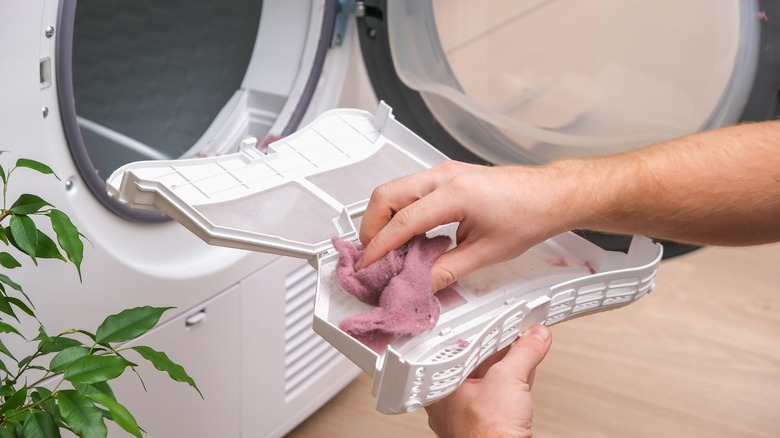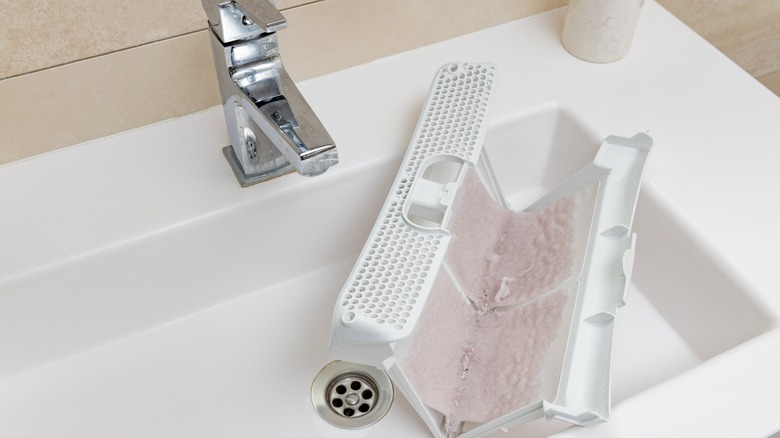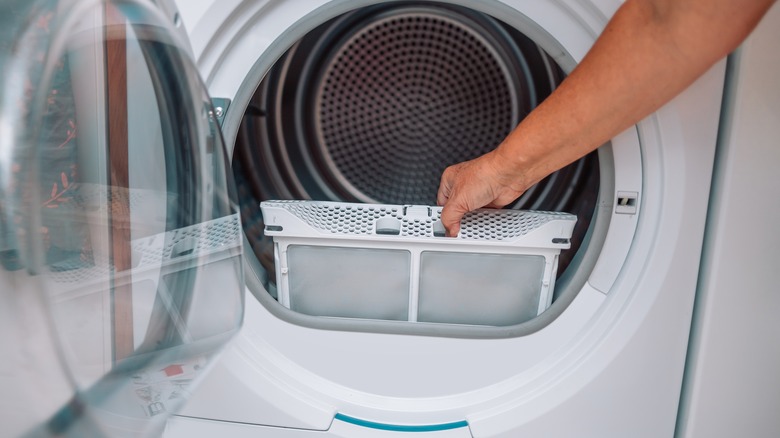The Household Essentials You Should Be Using To Clean Your Dirty Lint Trap
Delving into the realm of household essentials, an overlooked but critical challenge surfaces—maintaining a clean lint trap. The lint trap, often underestimated, plays a pivotal role in the efficiency and safety of your dryer. A neglected lint trap poses a significant fire hazard within the household. Over time, as lint accumulates in the trap, it becomes a highly flammable material that, when exposed to heat, can ignite with alarming speed. The heat generated during the normal drying process can elevate the risk, as the trapped lint serves as fuel for potential flames. The lint's combustible nature makes it a prime contributor to dryer fires, which can escalate rapidly and have devastating consequences. Regularly emptying and cleaning the lint trap is not merely a maintenance task but a crucial safety measure, safeguarding both your home and the well-being of its occupants.
Warm water, dish soap, and vinegar together create a strong and practical cleaning solution for dealing with the challenges of lint buildup in your dryer's lint trap. Warm water helps to enhance the effectiveness of the other cleaning agents and break down the lint. Adding a bit of dish soap brings in a grease-cutting element, ensuring a thorough and cost-effective clean with easily accessible items. Introducing vinegar takes things up a notch. Its acidity is crucial for breaking down tough residues, providing a deep clean. Beyond that, vinegar acts as a natural deodorizer, getting rid of any lingering smells in the lint trap.
Cleaning the lint trap
Between laundry loads, as a preliminary measure, use your hands to rid the lint trap screen of any built-up lint. This hands-on approach helps prevent clogs and ensures a smoother functioning of your dryer. The next step involves creating the cleaning solution. Fill either your sink or a bucket with warm water, adding a few drops of dish soap to the mix. Next, incorporate ½ cup of white vinegar into the warm water and dish soap mixture. This combination serves as a powerful and versatile cleaning agent, breaking down leftover fibers on the lint trap screen. Ensure that the lint trap screen is fully submerged in the water without bending or warping it. This gentle soaking process allows the cleaning solution to penetrate and dislodge even the most stubborn lint particles, ensuring a comprehensive cleanse.
After a 30-minute soak, carefully remove the lint trap screen and rinse it thoroughly, making sure the water runs freely through all the holes. Be sure to dry it thoroughly before returning it to the dryer. Incorporating these household essentials into your lint trap cleaning routine not only enhances the functionality of your dryer but also contributes to a safer and more effective laundry experience.
Cleaning the lint trap holder
Cleaning the lint trap holder within the dryer is a crucial step in maintaining optimal functionality and safety. Here's a straightforward approach to effectively clean this component: Before beginning the cleaning process, ensure the dryer is powered off and unplugged to guarantee safety during maintenance. Thoroughly inspect the lint trap holder for any residual lint that may have accumulated. Use a flashlight to illuminate the area and identify hidden lint particles. Employ a vacuum cleaner attachment designed for crevices to remove lint from the holder. Gently brush or vacuum away any visible lint, paying attention to corners and edges. Dampen a cloth or sponge with warm water and wipe down the lint trap housing. This helps in removing any remaining lint residue and ensures a clean surface. Inspect the ventilation openings around the lint trap holder. Clear any lint or debris that may have accumulated in these openings, hindering proper airflow. Once the lint trap holder is thoroughly cleaned, reinsert the lint trap securely into its place.
Incorporate regular checks of the lint trap holder into your dryer maintenance routine. This preventive measure helps catch lint accumulation early and ensures a consistently efficient and safe dryer operation. By following these steps, you contribute to the longevity of your dryer and reduce the risk of fire hazards associated with lint buildup within the lint trap holder.


